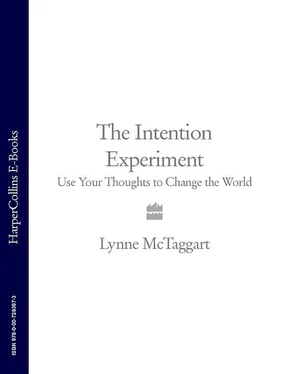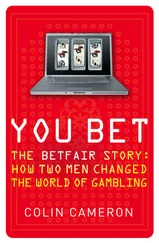Sometimes a physical jolt to the system triggers a shock of realization. For physicist Konstantin Korotkov, his insight resulted from a fall off a roof. It was the winter of 1976, and Korotkov, who was 24 at the time, had been celebrating a birthday with some friends. Korotkov liked to celebrate outside, whatever the weather. He and his friends had been drinking vodka on the roof. Korotkov was given to expansive gestures, and during a moment of gaiety, threw himself off the roof onto what he thought was a deep bed of snow, which he assumed would cushion his fall. But hidden beneath the snow lay hard stone. Korotkov broke his left leg and landed in the hospital for months. 24
During his long recovery, Korotkov, a conventional professor of quantum physics at St Petersburg State Technical University in Russia, pondered on a lecture on Kirlian effects and healing that he had attended earlier that year. He had been so intrigued that he wondered if he could improve on what Kirlian claimed to be doing: capturing someone’s life energy on film.
Semyon Davidovich Kirlian was an engineer who had discovered in 1939 that photographing living things that had been exposed to a pulsed electromagnetic field would capture what many have termed the human ‘aura’. When any conductive object (like living tissue) is placed on a plate made of an insulating material, such as glass, and exposed to high-voltage, high-frequency electricity, a low current results that creates a corona discharge, a halo of coloured light around the object that can be captured on film. Kirlian claimed that the state of the aura reflected the person’s state of health; changes in the aura were evidence of disease or mental disturbance.
The Soviet scientific mainstream ignored Kirlian until the 1960s, when the Russian press discovered bioelectrography, as it came to be called, and hailed him as a great inventor. Kirlian photography suddenly became respectable, particularly in space research, and was championed by many Western scientists. Publication of Kirlian’s first study in 1964 further attracted the scientific community. 25
Lying for months in his bed, Korotkov realized that if he was going to discover more about how to capture this mysterious light Kirlian claimed was so vital to health, he was going to have to give up his day job. He knew that the involvement of a well-established quantum physicist such as himself would lend the technique scientific legitimacy and his technical ability might also help advance the technology. Perhaps he could even devise a means of depicting the light in real time.
After he got back up on his feet, Korotkov spent months developing a mechanism, which he called the Gas Discharge Visualization (GDV) technique, that made use of state-of-the-art optics, digitized television matrices and a powerful computer. Ordinarily, a living thing will dribble out the faintest pulse of photons, perceptible only to the most sensitive equipment in conditions of utter pitch black. As Korotkov realized, a better way to capture this light was to stir up photons by ‘evoking’, or stimulating them into an excited state so that they would shine millions of times more intensely than normal.
His equipment blended several techniques: photography, measurements of light intensity and computerized pattern recognition. Korotkov’s camera would take pictures of the field around each of the 10 fingers, one finger at a time. A computer program would then extrapolate from this a real-time image of the ‘biofield’ surrounding the organism and deduce from it the state of the organism’s health.
Korotkov went on to write five books on the human bioenergy field. 26In time, he managed to convince the Russian Ministry of Health of the importance of his invention to medical technology, diagnosis and treatment. His equipment was initially employed to predict certain clinical situations, such as the progress of recovery of people after surgery. 27It soon became widely used in Russia as a diagnostic tool for many illnesses, including cancer and stress, 28and was even used to assess athletic potential – to predict the psychophysical reserves in athletes training for the Olympics and the likelihood of victory or exhaustion from overtraining. 29Eventually, some 3000 doctors, practitioners and researchers worldwide came to use the technology. The National Institutes of Health got interested and funded work on the ‘biofield’, which employed Korotkov’s equipment. 30
While officially exploring these practical applications, Korotkov privately carried on with his own studies of what had really captured his imagination: the connection between biofields and consciousness. 31He took GDV readings of healers and a Qigong master while they were sending energy, and discovered remarkable changes in their corona discharges. Korotkov then explored the effects of a person’s thoughts on the people surrounding him. He asked a number of couples to ‘send’ a variety of thoughts to their partners, while they were standing within close range. Every strong emotion – whether love, hate or anger – produced an extraordinary effect on the light discharge of the recipient. 32
Some 40 years after Backster first employed his crude polygraph mechanism to register the effect of thoughts, Korotkov verified those early discoveries with state-of-the-art equipment. He hooked up a potted plant to his GDV machine and asked his researchers to think of different emotions – anger, sadness, joy – and then positive and negative intentions towards the plant. Whenever a participant mentally threatened the plant, its energy field diminished. The opposite occurred if people approached the plant with water or feelings of love.
Largely because he lacked scientific credentials, Backster was never recognized for his contributions. He had stumbled across the first evidence that living things engage in a constant two-way flow of information with their environment, enabling them to register even the nuances of human thought. The more advanced scientific knowledge of physicists Fritz Popp and Konstantin Korotkov was needed to uncover the actual mechanism of that communication. Their research into the nature of quantum light emissions from living organisms suddenly made sense of Backster’s findings. If thoughts are another stream of photons, it is perfectly plausible that a plant could pick up the signals and be affected by them.
The work of Backster, Popp and Korotkov suggested something profound about the effect of intention. Every last thought appeared to augment or diminish something else’s light.
Notes - Chapter 3: The Two-Way Street
1. For all history of Cleve Backster’s discoveries and experiments, interview with Backster, October 2004 and his Primary Perception: Biocommunication with Plants, Living Foods, and Human Cells , Anza, Calif.: White Rose Millennium Press, 2003.
2. As Obi-Wan Kenobe tells Luke Skywalker, after Alderan has been blown up by the Empire in Star Wars part IV: A New Hope : ‘I feel a great disturbance in the Force. As if millions of voices suddenly cried out in terror, and were suddenly silenced.’
3. Presentation given at the Tenth Annual Parapsychology Association meeting in New York City, September 7, 1967. Also published as C. Backster, ‘Evidence of a primary perception in plant life’, International Journal of Parapsychology , 1968; 10 (4): 329–48.
4. P. Dubrov and V. N. Pushkin, Parapsychology and Contemporary Science , New York and London: Consultants Bureau, 1982.
5. P. Tompkins and C. Bird, The Secret Life of Plants , New York: Harper & Row, 1973.
6. ‘Boysenberry to Prune, Boysenberry to Prune: Do you read me? Lie detector expert Cleve Backster reported in the annual meeting of the American Association for the Advancement of Science that he had detected electrical impulses between two containers of yogurt at opposite ends of his laboratory. Backster claims the bacteria in the containers were communicating.’ Esquire , January 1976.
Читать дальше











